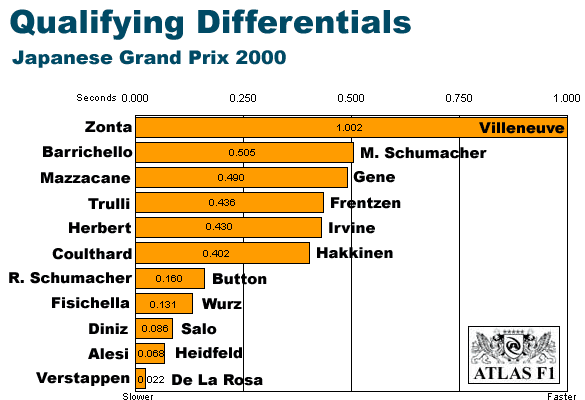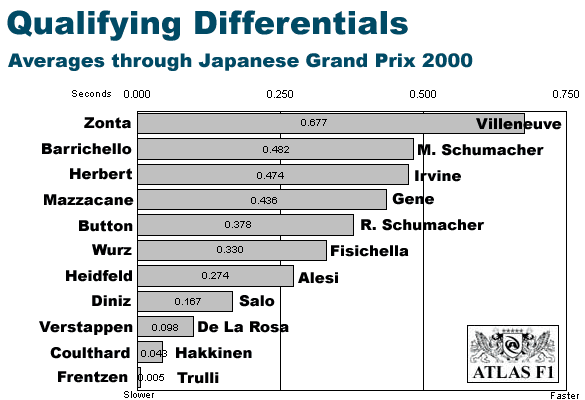| ATLAS F1 Volume 6, Issue 41 | |||
 |
Qualifying Differentials | ||
| by Marcel Borsboom, Netherlands | |
|
Atlas F1 is going to keep an eye on the battle between teammates throughout the season with a simple measurement: we compare the qualifying times of each driver against his teammate's result. After every Grand Prix, we will show how teammates have fared up against each other, and where they are overall since the beginning of the season. At the end of the season, the World Champion of Qualifying Differentials will be elected - the driver who was most beaten by his teammates, in seconds. Only those who participate in at least 15 of the 17 rounds are eligible for the coveted crown; and for those who made the efforts and participated in all 17 races, the best and worst result will be scrapped.
Japan Notables
The average gap between teammates in Japan was 0.339 - it would have been far smaller, if it wasn't for the huge gap between the BAR drivers. However, the gap was nonetheless small, continuing the trend we've seen in previous races: 0.290 in the US Grand Prix and 0.341 in Italy. In contrast, the gap was 0.561 in Belgium; 0.584 in Hungary; 1.072 in Germany; 0.288 in Austria; 0.400 in France; 0.449 in Canada; 0.486 in Monaco; 0.546s in Europe; 0.48s in Spain; 0.725s in Britain; 0.654s in San Marino; 0.455s in Brazil; and 0.874s in Australia.
|


| Marcel Borsboom | © 2000 Kaizar.Com, Incorporated. |
| Send comments to: borsboom@atlasf1.com | Terms & Conditions |